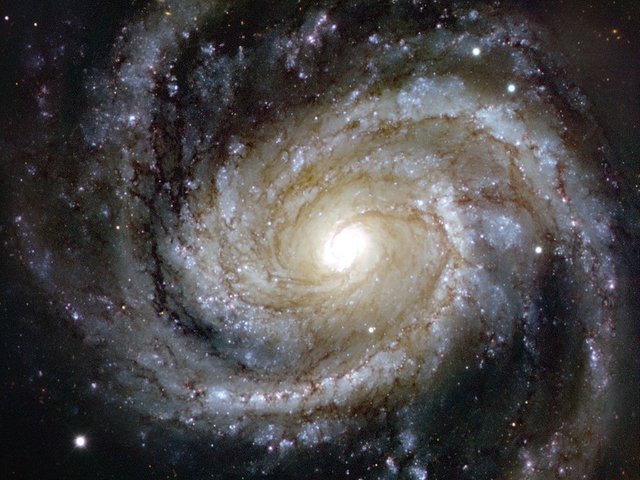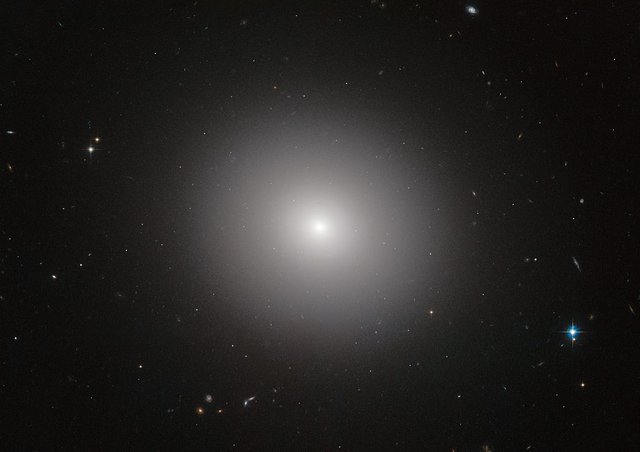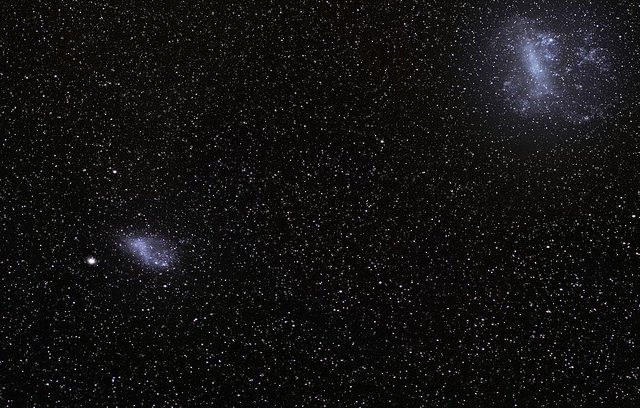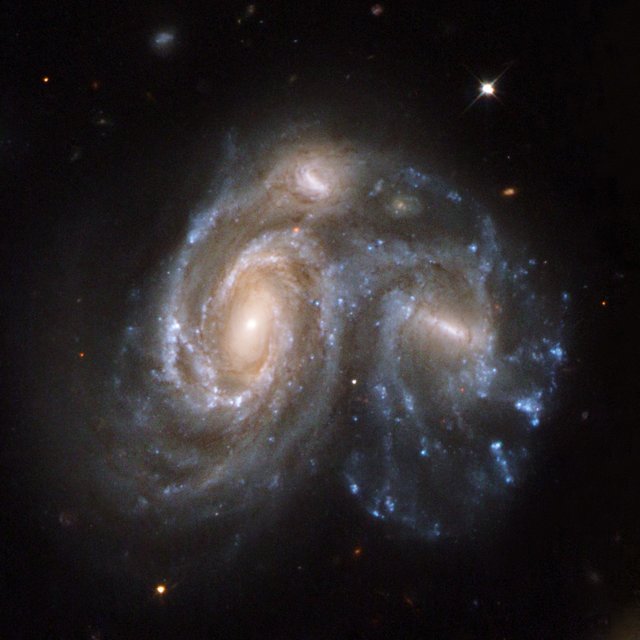Galaxies - Amazing giants
Galaxies are huge and very complex systems. They are combine clouds of gas, dust and billions of stars. Just as there are many stars in galaxies, so are many galaxies in the universe. They give us to understand how huge is the cosmos.

By ESO link [CC BY 4.0 license]
The galaxies come in many forms and have different shapes. We distinguish three basic types of galaxies due to their shape: Spiral, Barred spiral and Elliptical. Edwin Hubble divided them in this way in 1926. In later years, two additional categories were introduced: Lenticular and Irregular galaxies.
Spiral Galaxies
As much as 75% of the galaxies we know are spiral galaxies. Their sizes are very large and range from 15 to 150 thousand light-years in diameter. The mass of spiral galaxies ranges from 10 billion to 10 trillion masses of the Sun. In spiral galaxies, most of the mass focuses in the center, gradually reducing the density towards the spiral arms. Looking from the side of such a galaxy, we see a central bulge and a thin disk that can contain all kinds of nebulae, globular clusters or areas of dark dust on the entire surface. Young bright stars usually appear in spiral arms. The core of the spiral galaxy is dominated by old and red supergiants. An example of a typical spiral galaxy is our Milky Way and Andromeda galaxy (M31). Spiral galaxies probably formed longer than elliptical. The types of shapes of this type of galaxies suggest numerous cosmic collisions with other galaxies. The example in the picture next to shows the collision of spiral galaxies. Barred spiral galaxies are much less common. The bar is made of bright stars and hot gases around the nucleus.
Elliptical Galaxies

By ESA/Hubble & NASA link [Public domain]
They are huge balls made of stars. Some have a somewhat flattened shape. The largest of them have a diameter of 100,000 light years, and the mass sometimes reaches up to 100 trillion masses of the Sun. This is because matter in such objects is much more densely focused than in spiral galaxies, in which similarly is only in their very core. However, large elliptical galaxies are rare. Most of these types of objects are small galaxies up to 1000 light-years in diameter. Scientists believe that elliptical galaxies arose a long time ago in the still-young universe. These objects contain mainly older stars and have a small amount of dust compared to spiral galaxies.
Lenticular and Irregular Galaxies

By ESO/S. Brunier link [CC BY 4.0 license]
Between spiral and elliptical galaxies there are objects on the border between these two classes. They don't have spiral arms and usually consist of old stars. Like elliptical galaxies, lenticular galaxies don't contain too much dust, sometimes they collect only along the edge of these objects. Irregular galaxies don't have specific typical shapes. They are similar in shape to clouds similar to nebulae. There are relatively few of them. The two most familiar and closest to us are the Large and Small Magellanic Clouds. Unfortunately, they are visible only in the southern hemisphere of Earth's sky.


This post has been voted on by the SteemSTEM curation team and voting trail in collaboration with @curie.
If you appreciate the work we are doing then consider voting both projects for witness by selecting stem.witness and curie!
For additional information please join us on the SteemSTEM discord and to get to know the rest of the community!
Congratulations! Your post was selected by the @dropahead Curation Team (dCT)
This is an amazing series of pictures :) Since I was a little kid I really liked Astronomy-related content.
Thanks for sharing, best regards.
@dropahead - Supporting your STEEM adventure
Quality review by the dropahead Curation Team
According to our quality standards(1), your publication has reached an score of 89%.
Well said Gabriel García Marquez: "One learns to write by writing" Keep trying, you will soon achieve excellence!
(1) @dropahead's quality standards:
- Graphic relation to the text (Choice of images according to the text)
- Order and coherence
- Style and uniqueness (Personal touch, logic, complexity, what makes it interesting and easy to understand for the reader)
- Images source and their usage license
As I'm a biologist... Absolutely unimaginable scale...
It is actually your opposite. I am watching the universe through the telescope and I feel its huge size. But I also like to look through microscope and see the world on a micro scale.
I'm about to put my hands on STED microscope, I can now see 10nm - in visible spectrum ;)
link
I don't know many about microscopes :) In telescopes counts the diameter of the optics. The higher diameter give the more light and gives better resolution. Generally, the only limit is money.
Nice post :)
I would also say that in general, spiral galaxies contain a black hole in the center. Although we are not 100% sure, it however seems that this is the case.
Thank you very much:) Currently, I am preparing articles about active galaxies and galaxy clusters. I try to write in simple language, understood for everyone to interest people in the topics of astronomy.
Please do so ^^